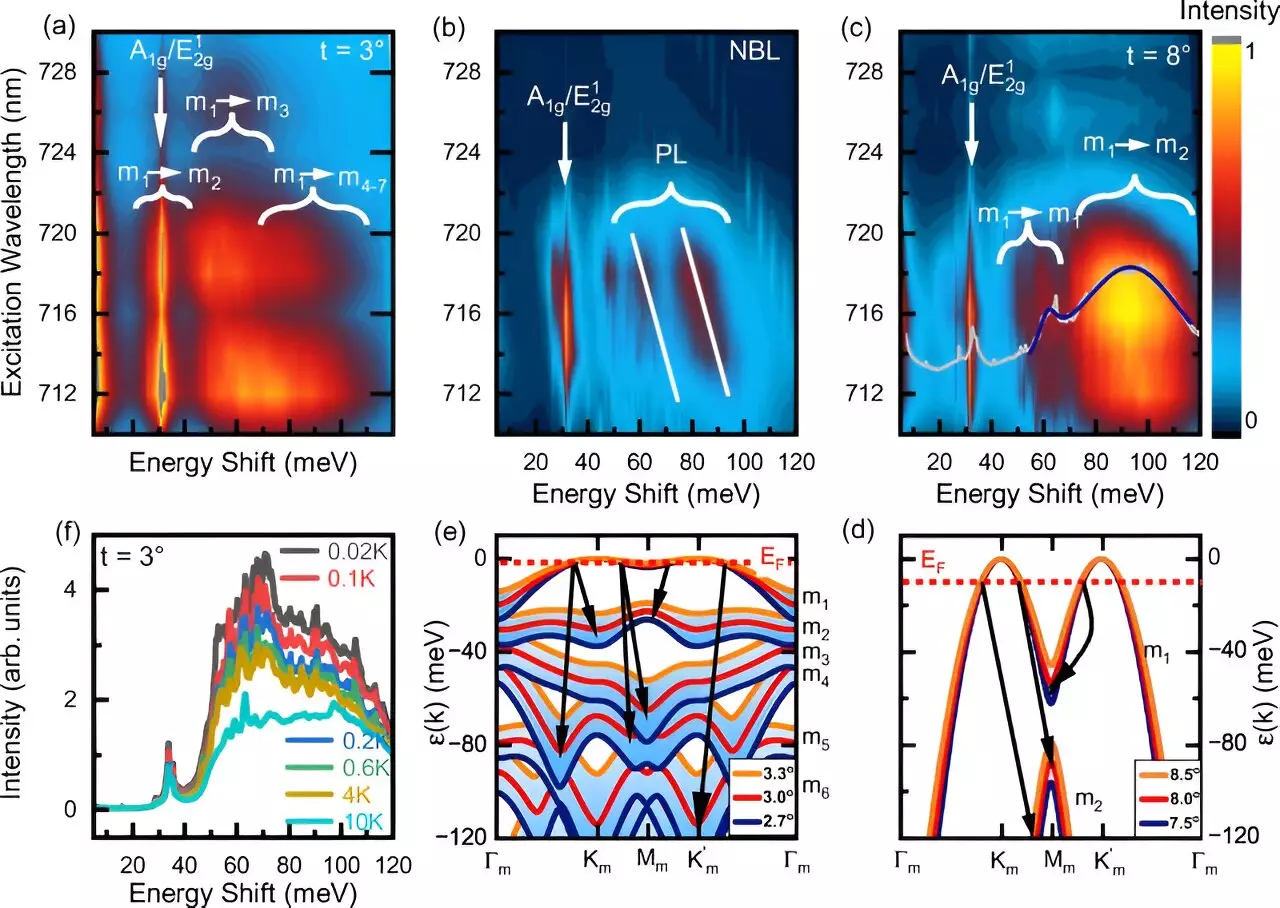The concept of two-dimensional materials has revolutionized the field of physics, leading to surprising discoveries and new insights. When a material is reduced to just one or two layers of molecules, it undergoes a remarkable transformation. The properties of these ultra-thin materials differ significantly from their bulk counterparts, opening up a world of possibilities for researchers and scientists.
Led by physicist Prof. Ursula Wurstbauer from the University of Münster, a research team has delved into the intricate realm of two-dimensional crystals. Their goal is to understand how the properties of these materials can be manipulated to exhibit a range of behaviors, such as acting as insulators, electrical conductors, superconductors, or ferromagnets. By exploring the interactions between charge carriers (electrons) and the energy landscape of the crystals, the team aims to uncover ways to control and influence these properties significantly.
In a groundbreaking study published in Physical Review Letters, the team has successfully generated and quantitatively demonstrated collective excitations of charge carriers within different energy landscapes. This achievement marks a significant advancement in our comprehension of the electronic characteristics of crystal structures, shedding light on novel ways to alter and tailor their behavior.
To induce specific properties in the two-dimensional crystals, the scientists employed a clever technique. They stacked two layers of a crystal on top of each other and slightly twisted them, resulting in the formation of moiré patterns. These patterns resemble the intertwined threads of thin curtain fabric, creating a unique energy landscape that slows down the movement of electrons significantly. As a result, the electrons interact more intensively with each other, leading to intriguing phenomena known as strongly correlated behavior.
According to Prof. Wurstbauer, the electrons in the moiré patterns exhibit distinct behaviors, akin to the ‘wild’ dancing in a disco compared to the structured dance patterns of traditional dances. The specific dance of electrons is influenced by the geometric patterns, the number of charge carriers present, and the resulting energy landscape. This intricate interplay dictates the emergent properties of the material system, paving the way for innovative applications in quantum technology and neuromorphic components.
The research team, comprising scientists from various institutions including the University of Hamburg, RWTH Aachen University, and the Max Planck Institute for the Structure and Dynamics of Matter, combined experimental work with theoretical analyses. By preparing and analyzing different two-dimensional crystals with optical spectroscopy methods at cryogenic temperatures, the researchers gained crucial insights into the behavior and properties of these fascinating materials.
The study of two-dimensional crystals offers a captivating glimpse into the intricate world of quantum phenomena and emergent properties. Through innovative research and collaborative efforts, scientists are unraveling the mysteries of these materials and paving the way for groundbreaking applications in technology and beyond.


Leave a Reply